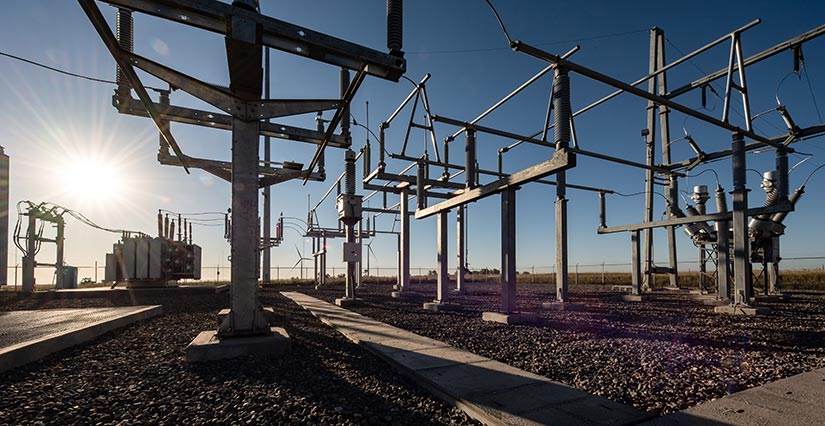
The Power Electronic Grid Interface (PEGI) Platform at NREL Will Move Power Grid Innovations Rapidly From Prototype to the Field

As the electrical grid makes a historic transition to renewable and distributed energy, even its organizing principles are in flux. Incoming power electronics, like the inverters that interconnect solar panels and battery systems with the grid, could cause a wholescale shift in grid technology from electro-mechanical to electronic, and from rigid physics to programmability. This transition requires a deep look at how to develop, control, and deploy upcoming power electronic devices for energy systems, which is now possible with the Power Electronic Grid Interface (PEGI) platform at NREL.
PEGI is part of NREL’s Advanced Research on Integrated Energy Systems (ARIES) platform, the nation’s primary research site to prove advanced energy system concepts. ARIES makes it possible to combine research platforms for an almost-limitless scope, allowing PEGI to explore the diverse grid impacts of power electronics, including everything from consumer electronics like modern refrigerators and electric vehicles, to inverter-based resources like wind, solar photovoltaics, and battery systems, and the next generation of grid technologies that are revolutionizing medium- and low-voltage power systems.

NREL hosts 20-MW of wind, solar, hydrogen, vehicles, storage, and other resources, all of which exist on the PEGI research pad, and can be used to emulate an extensive range of power system events and configurations. Photo courtesy of NREL
“We are seeing a wave of power electronic devices interconnecting at all levels of the electric grid, and we have no precedent that can inform us about how exactly to proceed,” said Barry Mather, manager of integrated devices and systems research at NREL. “This is a critical moment for the industry and grid planners to understand the technologies shaping their systems and find solutions to their specific needs. PEGI is foremost an asset for partners to experiment in a realistic and risk-free environment.”
Plug and Play at Megawatt Scale
One defining aspect of PEGI is the freedom to model grid scenarios at the megawatt scale. PEGI is specifically focused on addressing grid stability questions such as grid-forming inverter control, operating the grid with high amounts of inverter-based resources, and the interconnection of wind and solar plants.
PEGI has a dedicated power system: As power is wired into NREL’s campuses from the local utility, it first passes through a controllable grid interface that allows researchers to customize power conditions. At this interface, researchers can invent grid scenarios: A fault, a blackout, or a 100% renewable energy system, for example. Down-line from the grid interface, PEGI equipment then evaluates the responses and control interactions of power electronic devices under-test.Read More…
Source : nrel














